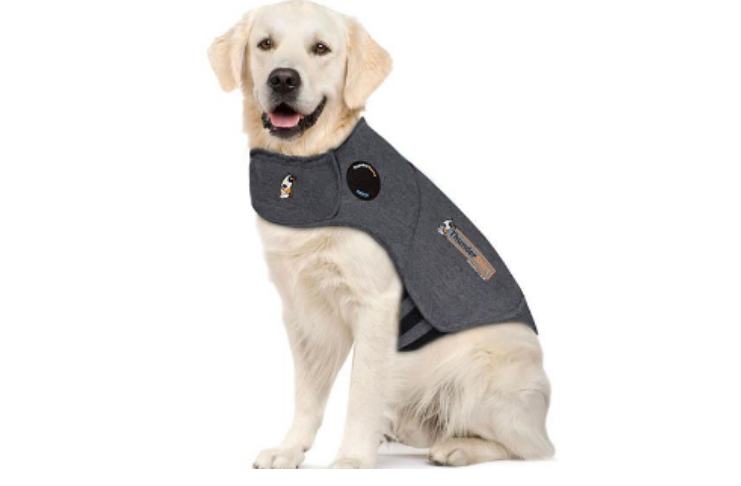
How to Manage Separation Anxiety in Dogs
All existing animals in this world share some everyday habits. Be it the two legs walker or the four legs walker, everyone connects through some or the other routines. Two common animals that identify each other well are humans and dogs. They bond with each other in several ways as there are lots of similarities in their nature. One such similarity is the feeling of anxiety.
While it sounds shocking to many, anxiety is a common trait not only suffered by humans but dogs as well. There could be various reasons like separation from the previous owners or the shelter environment. But fear not, for anxiety in dogs, like their other undesirable tendencies, may be treated.
7 Helpful tips for treating separation anxiety in dogs
Separation anxiety in dogs can manifest itself in various ways. It can be whimpering, winning, shivering, and barking. You may also notice your dog getting hostile or destructive while anxious. If you don’t address the problem right away, they can lose their appetite and become completely reclusive.
Hence, it is crucial to notice your doggo’s behavior thoroughly at each stage. The following are seven proven ways that can help you calm your anxious dogs:
Exercise:
If your dog suffers from separation anxiety, then you must not leavethem alone. But it is not possible if you live alone and you have a job. Hence, try to spend some dedicated amount of time with your dog. The best way to do this is to exercise together.
Anxiety can consume a lot of energy. So, plan a morning schedule where you can take your dog out and do some fun activities before you leave. Take them out for a run, a stroll, a game of ball, or anything you like. Exercising helps dogs reduce stress by producing endorphins, much like humans.
Physical Contact
Everybody urges for a companion while feeling anxious or alone. Physical contacts help to ease and provide the warmth of care. There is nothing soother and calmer for your dog than your touch. Begin with identifying your dog’s symptoms and aim to nip them in the bud.
Don’t seek any reason or timing to love your pet. Pick them up, cuddle them, or provide gentle petting. Make sure, though, that your dog is in the mood for it. If they’re in the spirit to be loved, go ahead and do it.
Massage
A good massage session also helps your dog to calm and relax. Anxiety often puts stress on the muscles. Therefore, excellent massage therapy can work like magic to release that tension. Even if you don’t get enough time in the morning, you can try this at the end of the day.
Begin with gently massaging the neck area. Gradually then proceed downwards with long strokes. Keep your one hand on the dog while the other one is busy massaging. With time you may also get to spot where your pet holds its stress. Try to focus more and work on that particular area for better and faster recovery.

Therapies
There are therapies available to cope with your pet’s anxiety. One of them that you can try by yourself at home is music therapy. Music helps to alleviate the noise sensitivity of your canine friend by blocking the external noises. Research even says several dogs like to hear classical music. You can also try harp music and observe your dog’s reaction and recovery from it.
There are certain alternative therapies available as well. You can opt for medical treatments proven to heal anxiety in dogs. If you feel that is risky, then you can try aromatherapies. However, there are quite limited shreds of evidence to prove the usefulness of these alternative therapies. Hence, mark them as your last resort and try to handle the situation with natural practices.
Avoid Punishments
Things you don’t do are equally important as things you practice to tackle the situation. You need to understand your dog is going through a phase. They may or may not always act decent. However, you must not reprimand them if they are behaving naughty because they are anxious.
Few dogs get worked up if left home alone, while some experience mild distress or anxiety. You need to understand what your canines feel and experience to treat them the right way. On the contrary, punishing them for their stress will only worsen the symptoms. Leaving them alone for a longer time to treat them a lesson is not a good solution either. Such actions will only lead to similar or worse symptoms in the looming days.
Resist Over Comforting
You undoubtedly want to pour all your love and adoration on your canine. But make sure you don’t overdo it. Fussing over your pet right before you leave home can exacerbate the separation anxiety symptoms.
Showering too much love can make your dog hopeful of something nice about to happen. But spotting the exact opposite after such joy can make them more anxious. That doesn’t mean you should treat them harshly or as if you don’t care. Just try to express your temptations to an extent where your dog can feel that you care even if you are not around them 24*7.
Make Your Dog Used to
You can feel the pain or sadness when you go away from your doggo. It also experiences the same or even more when you leave. Hence, it is difficult for you both, so try to take baby steps first.
Don’t leave them for straight six to eight hours right in the initial days. Begin with ten to twenty minutes to control its anxiety if it’s new. Gradually stretch it to an hour or so. Try to spot the difference in its behavior. Also, calm him as he gets anxious and overwhelmed as you come back. Make it used to this short-time loneliness gradually till your dog gets habituated.
Conclusion
No problem is impossible to solve. All you need is keen observance and patience. Your canine’s anxiety only shows his feelings for you. You might not always understand what your dog is feeling, but don’t panic in such situations. Remember looking you anxious or upset can make your dog feel the same way.
What you can do is take expert help and treat it medically. With time and togetherness, you can re-energize your dog. Remember, just like a human, this process will need a lot of patience with your dog too. Hence, have faith and try all you can to comfort them.





